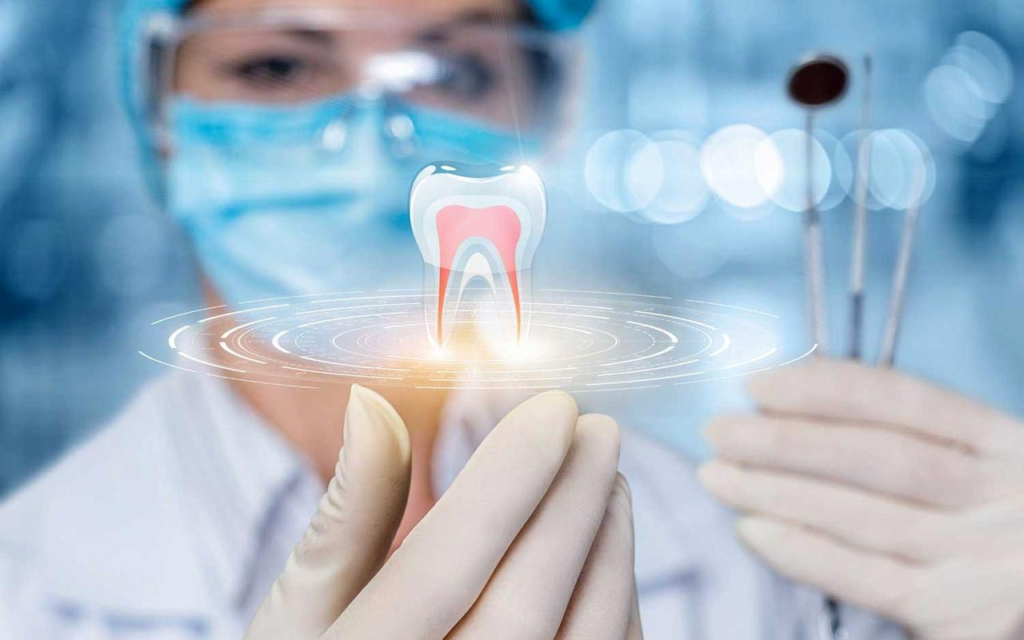Dental technology has revolutionized the field of dentistry, providing advanced tools and techniques that enhance the way oral healthcare is delivered. From diagnostic equipment to treatment solutions, dental technology plays a crucial role in improving patient outcomes and ensuring optimal oral health. In this article, we will explore the various aspects of dental technology, its benefits, and its impact on modern dentistry.
Advancements in Dental Technology
Dental technology encompasses the tools, equipment, and techniques used in dentistry to diagnose, treat, and prevent oral health issues. It involves the application of scientific knowledge and advancements in materials, imaging, and computer technology to provide effective and efficient dental care.
Evolution of Dental Technology
Over the years, dental technology has witnessed remarkable advancements. Traditional dental practices have transformed into high-tech processes that offer improved precision, accuracy, and patient comfort. From simple hand tools to sophisticated digital systems, dental technology has come a long way in enhancing the quality of care provided by dental professionals.
Digital Imaging and Diagnostics
Digital imaging has revolutionized the way dental professionals visualize and diagnose oral health conditions. Technologies such as digital X-rays, cone-beam computed tomography (CBCT), and intraoral scanners provide detailed and accurate images of the teeth, gums, and jawbone. These imaging techniques help in detecting dental issues at an early stage, allowing for prompt and effective treatment.
CAD/CAM Technology
Computer-aided design and computer-aided manufacturing (CAD/CAM) technology have significantly transformed the process of creating dental restorations. With CAD/CAM systems, dental professionals can design and fabricate crowns, bridges, and veneers directly in their clinics, reducing the need for multiple appointments and temporary restorations. This technology ensures precise and customized dental restorations that fit seamlessly with the patient’s natural teeth.
Laser Dentistry
Laser technology has found its application in various dental procedures, offering numerous benefits over traditional methods. Dental lasers are used for procedures such as cavity preparation, gum disease treatment, teeth whitening, and even oral surgery. Laser dentistry allows for precise tissue removal, reduced bleeding, faster healing, and improved patient comfort.
3D Printing in Dentistry
The advent of 3D printing has opened up new possibilities in dentistry. Dental laboratories and clinics can now produce accurate and customized dental models, surgical guides, aligners, and even temporary or permanent restorations using 3D printing technology. This advancement not only saves time and resources but also improves treatment outcomes.
Dental Implants and Prosthetics
Dental implants and prosthetics have witnessed significant advancements with the help of dental technology. The use of computer-guided implant placement techniques ensures precise and predictable results. Additionally, digital dentures and prosthetics offer better fit, aesthetics, and functionality compared to traditional methods.
Robotics in Dentistry
Robotic technology is making its way into the field of dentistry, offering precise and automated solutions for certain procedures. Robots can assist in dental surgeries, implant placement, and even teeth cleaning, ensuring accurate outcomes and reducing the margin for human error.
Advances in Orthodontics
Orthodontic treatments have been greatly influenced by dental technology. Clear aligner systems, such as Invisalign, utilize advanced computer algorithms and 3D printing to create custom aligners that gradually move the teeth into their desired positions. This technology has revolutionized orthodontic treatment, providing a more discreet and comfortable alternative to traditional braces.
Tele-dentistry
Tele-dentistry leverages digital communication and information technologies to provide dental care remotely. It enables patients to consult with dental professionals, receive diagnoses, and even get treatment recommendations without the need for in-person visits. Tele-dentistry improves access to dental care, especially for individuals in remote areas or with limited mobility.
Nanotechnology in Dentistry
Nanotechnology has made significant contributions to dental materials and treatments. Nanomaterials are used in dental fillings, dental adhesives, and even in the development of antibacterial coatings for dental implants. These advancements enhance the durability and aesthetics of dental restorations while minimizing the risk of oral infections.
Dental Education and Technology
Dental education has also embraced technology to enhance the learning experience of aspiring dental professionals. Virtual reality simulations, digital learning platforms, and online resources provide students with interactive and immersive educational opportunities. These tools enable dental students to gain practical skills and knowledge in a safe and controlled environment.
Future Trends in Dental Technology
The future of dental technology holds immense possibilities. Emerging technologies such as artificial intelligence, augmented reality, and regenerative dentistry are likely to shape the dental landscape. AI algorithms can aid in diagnosis and treatment planning, while regenerative dentistry focuses on regrowing damaged or lost dental tissues. These advancements have the potential to revolutionize dental care further.
The Impact of Dental Technology on Patient Care
The integration of dental technology has positively impacted patient care in several ways. It has improved diagnostic accuracy, reduced treatment time, enhanced treatment outcomes, and increased patient comfort. Dental technology enables dentists to provide more personalized and efficient care, ensuring optimal oral health for patients.
Conclusion
Dental technology continues to advance at a rapid pace, transforming the field of dentistry. From digital imaging and CAD/CAM systems to laser dentistry and 3D printing, these innovations have revolutionized patient care and treatment outcomes. As technology continues to evolve, the future of dental care holds even greater possibilities, promising improved oral health for individuals worldwide.
Dental technology offers precise diagnostics, personalized treatments, reduced treatment time, and improved patient comfort.
Yes, dental technology undergoes rigorous testing and is designed to ensure patient safety.
Advanced techniques and tools, such as laser dentistry and digital anesthesia, provide more comfortable treatment experiences.
Yes, technologies like CAD/CAM and 3D printing enable faster fabrication of dental restorations, reducing the number of appointments needed.
The future of dental technology may include AI-assisted diagnostics, regenerative dentistry, and further advancements in materials and techniques.
FOR MORE
for more informative and knowledgeable blogs or articles you should be visit our website. https://cincinnatidentalservices.org/

